Playing a musical instrument is an excellent skill to learn as it allows you to express yourself, feel good, and have a ton of fun.
You can learn most musical instruments with a bit of patience and practice, and you can pick up the basics in as little as a few weeks. However, some instruments require great dedication, not only to learn but to master.
Here is a list of the 10 hardest instruments to play. These difficult musical instruments can give beginners a tough time, and make even professional musicians sweat.
Post Contents
1. Bagpipes
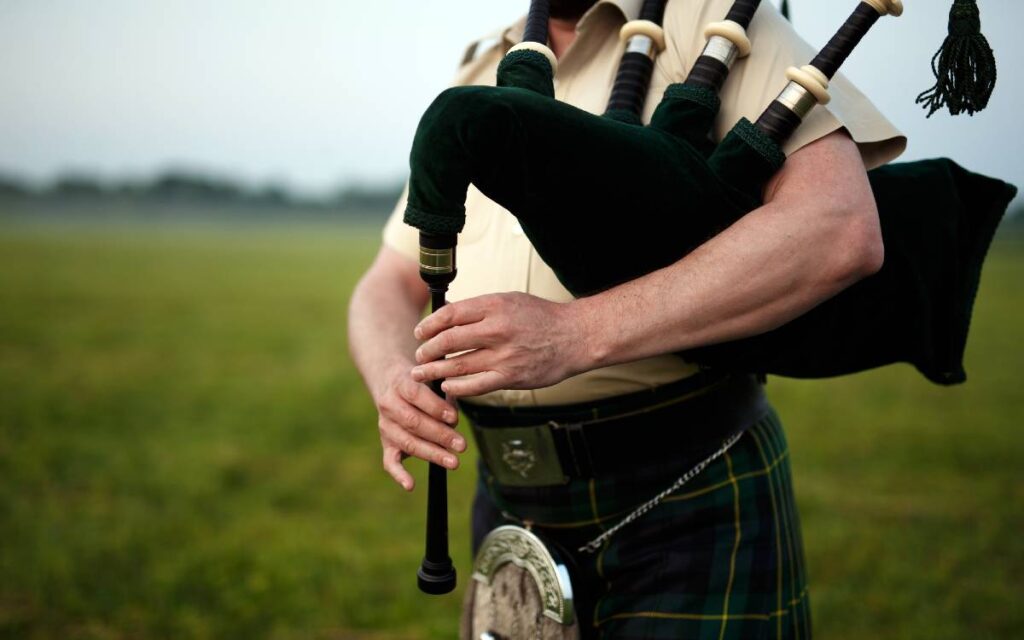
Depending on your taste in music, you may love the bagpipes or hate them. But there is one fact that we all can agree upon: bagpipes are one of the hardest instruments to learn and play properly.
The bagpipe can produce sound that gets attention in a good way when a skilled musician is behind the wheel. A newbie, not so much. It’s a very intricate wind instrument to play, even though its appearance may suggest otherwise. It requires very precise use of the fingers, the respiratory system, and the mouth with very skilled lip movements.
When playing the bagpipes, one must alternate the finger movements to make the notes varied and avoid boredom from your audience.
What makes the bagpipes one of the most difficult musical instruments is the combination of finger movement and managing your breathing, and doing both at the same time can become very overwhelming for a beginner.
Bagpipes require a specific skill of feeding air continually into the instrument’s reservoir and making sure that air is squeezed in to generate a pleasing sound.
Tuning the bagpipes is also difficult and requires years of practice. Becoming a skilled bagpipes player will take years of proper music lessons and practice, especially on breathing and finger movements.
2. Harp
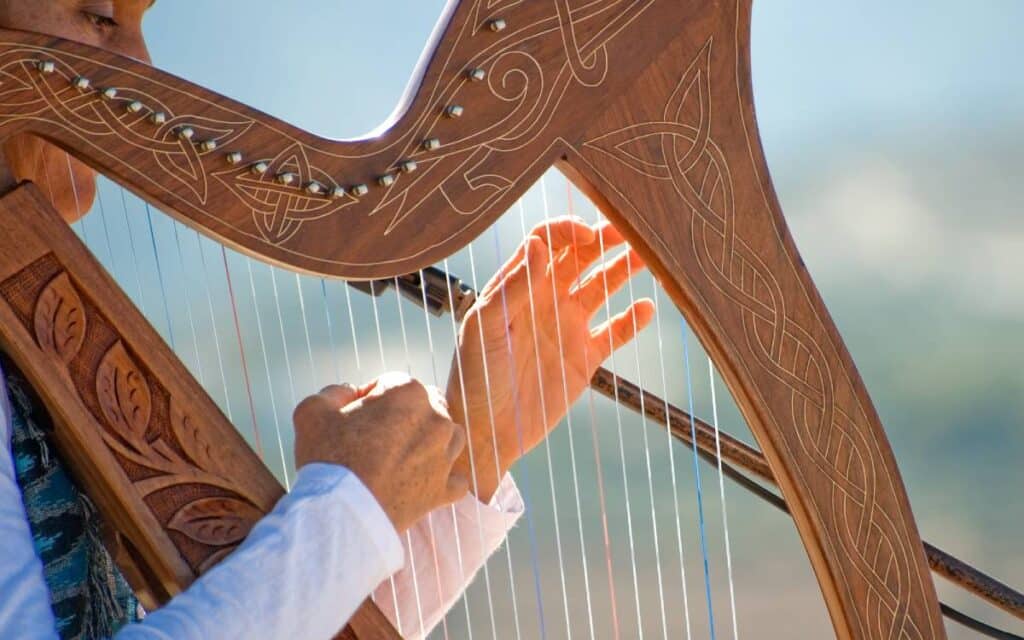
The harp is often considered the hardest string instruments to play. It has been a very popular instrument all the way back to ancient historical times. This amazing musical instrument is known to create very beautiful heavenly melodies.
However, the hard is also one of the most difficult instruments to play due to its sheer number of strings. There can be up to 47 strings on a harp. It’s very tough to get your hands into the right position, and you will require very precise control of your fingers just to make the harp music flow elegantly.
It can be very hard learning which strings to pluck, memorizing the melodies, and then trying to play without making mistakes. Not only that, this musical instrument isn’t as popular as the guitar or the piano, so it can be very hard to find a teacher for learning the harp.
Some harps also require you to use pedals to get a good sound, adding complexity to an already very complex instrument. Some harps can have up to 7 pedals to change the pitch of the sound. To get the tone you desire, the player may need to synchronize their playing with the pedals.
If you’re looking to play the harp, you need to develop very good hand-eye coordination and muscle memory which may take years to perfect. This makes the harp one of the hardest instruments to play and something you can’t just pick and play after a few music sessions.
3. French Horn

The French horn originates from France (I’m sure you could have guessed from the name). This is because the French were a huge manufacturer of hunting horns. The beauty of these brass instruments is impeccable, but don’t let this deceive you into thinking that it may be easy to play. Actually, it is quite the opposite.
The French horn is often considered the hardest brass instrument out there. This hard instrument plays in the highest partial of all the instruments, making it very easy to miss notes if you don’t place your lips on the instrument precisely or hit a wrong part with your fingers.
Another reason why the French horn is so hard to play is that it is huge in size and packs a lot of weight. It is designed in a long tube in the shape of a wide circle. This peculiar shape makes the French horn very awkward to hold, and you have to hold the instrument by circling your hands around it.
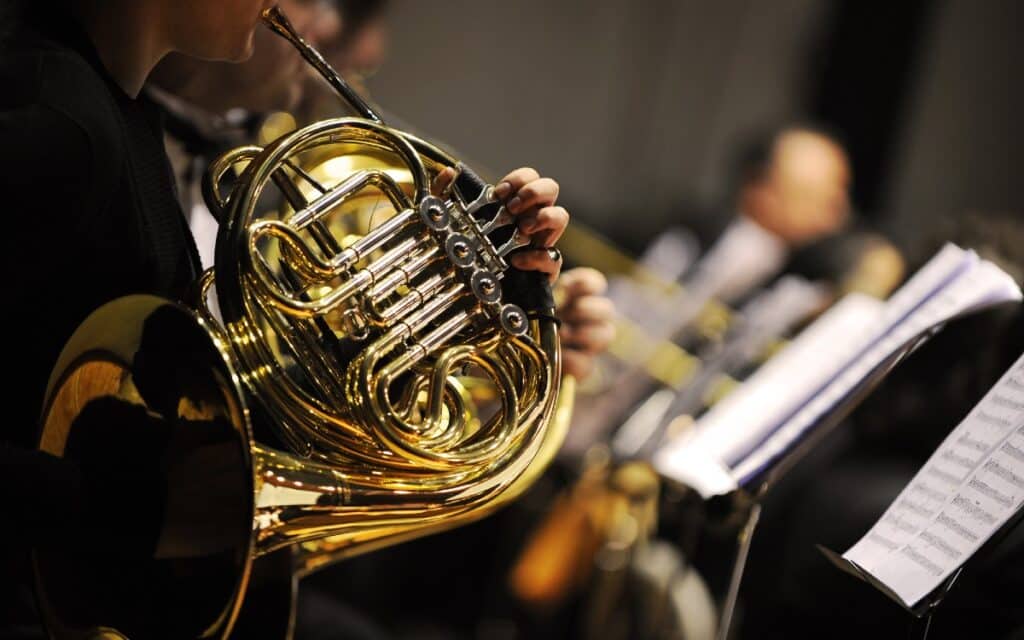
It is very difficult to play the French horn for longer periods. Not only that, the instrument requires you to nail your breathing technique to produce a pleasant sound. Your fingers also need to be very flexible for you to press the buttons freely.
Most people who start learning to play the French horn often take a long time to get used to moving their mouth around. As the instrument is louder than many other instruments, you need to have very strong lungs to play it properly.
Most orchestras often have a backup lead horn player, as the first player often gets too tired after a while to continue playing perfectly.
4. Accordion
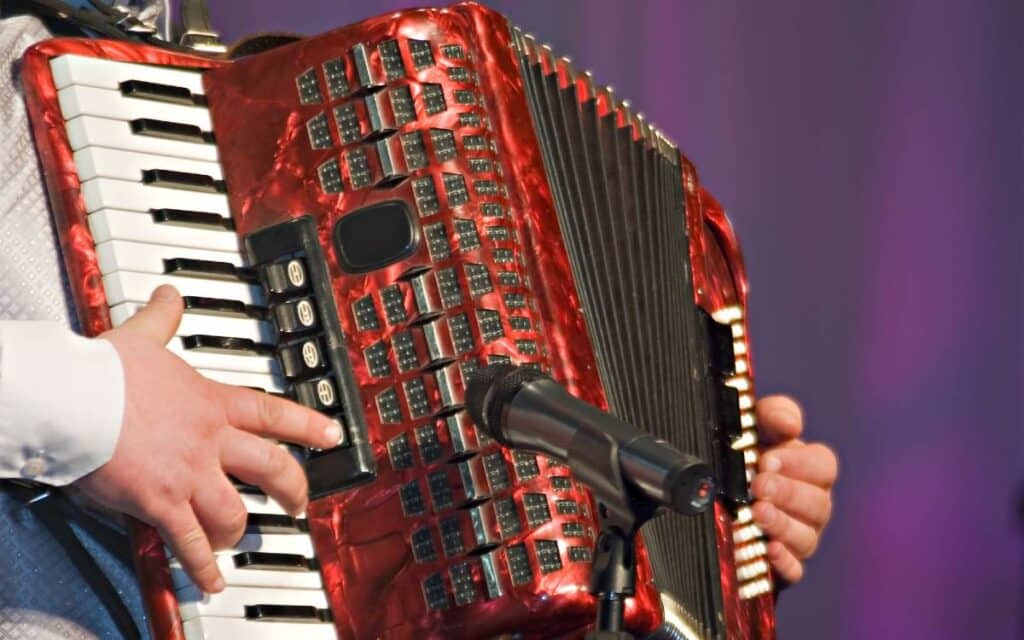
The accordion is a very tempting musical instrument, as most people want to play it due to the sheer fun involved in twisting and pulling the instrument around. The instrument produces a very joyous, fun sound.
However, as fun, as it is to play the accordion, it’s also one of the hardest instruments to play as well, and it can easily frustrate a beginner player.
A chromatic button accordion has two sides: one is used to play the bass, and the other is used to play treble. The bass part of the accordion consists of several buttons, while the treble side can either have a button or a keyboard configuration.
The bass side is still not that difficult to learn to play, but the treble side can often present players with many challenges. Not only that, you need to supply air to the instrument constantly, meaning that you have to move the bellows back and forth, all while simultaneously pressing the keys or the buttons of the bass and the treble.
This makes it hard and very confusing for the average musician. It’s not only about playing the correct keys but also the right chords and the correct notes with the diaphragm in the right spot. Most musicians describe it as playing the piano and bagpipes simultaneously. This really doesn’t paint a pretty picture as both the piano and the bagpipes are already among the hardest instruments to play.
5. Drums
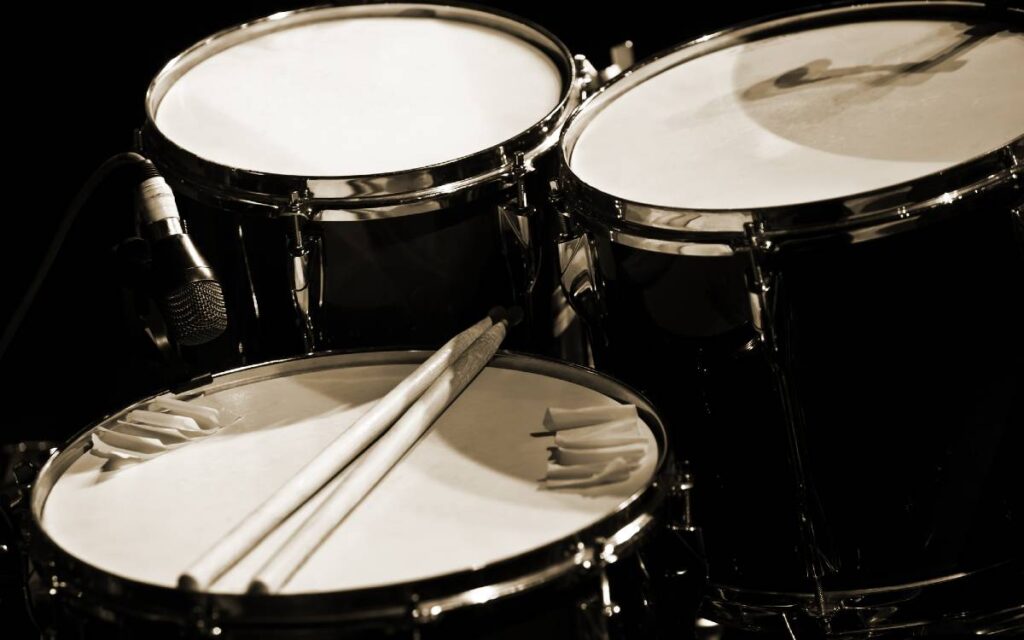
The drums are considered somewhat in the middle of the difficulty scale, but as with every instrument, it depends on how in-depth you are willing to learn the instrument. If you just want to play a simple drum pattern, you can do so in weeks. In some ways, a single snare drum or other percussion instruments can actually be the easiest instrument. However, learning complex drumming patterns and songs can take months or even years of hard work and practice.
If you want to be a great drummer, the skill ceiling for drumming is very high. The more in-depth you go with your drum lessons, the tougher things become. You could easily get started with the basics, but mastering the drums can take years.
Drums can be so hard to learn because all four limbs need to do very different things simultaneously, which can feel unnatural to most people. The simplest example of this is to rub your stomach and pat your head simultaneously. It feels very unnatural. Now try to add your feet into the mix, and you will understand what it really means.
Not only that, the drums are very exhausting to play for long amounts of time. It demands a lot of stamina for a drummer to keep their tempo for the length of a gig. Drumming is usually done in a band, so keeping in time with your other band members is also a huge challenge.
6. Violin

The violin is an easy instrument to get into, but it has a huge learning curve. Unlike the guitar, there aren’t any guides for your finger placement. This usually isn’t a problem for people who play the violin, but it makes it extremely challenging to play for someone who hasn’t played a fretless instrument before.
Remembering where to place your fingers without looking can be extremely tough. However, it becomes like typing on a computer keyboard with years of practice, where you don’t have to look at the keyboard to know where to put your fingers.
Now, most people can learn where to put their fingers and drag the bow across the string fairly easily after a few months of practice, but producing a beautiful song may take years of practice and good tutoring.
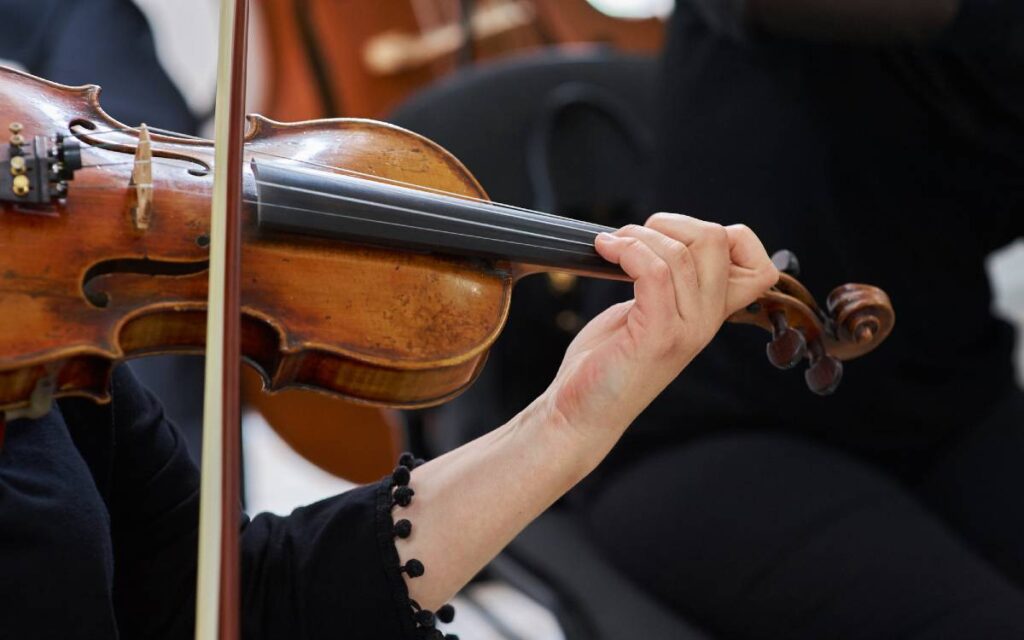
Violin requires a lot of patience to produce a rounded sound at the correct pitch, tone, and volume, all while making sure you’re not running out of your bow length.
Another part of playing the violin that makes it challenging to play is learning to hold it properly on your shoulder.
Holding the violin on your shoulder should be done in a way where you can easily move your left hand freely up and down on the fingerboard. As your skills become more advanced, you will start to learn more finger positions that will allow you to go higher up on the violin’s neck and develop a better vibrato. This can be very difficult, but it’s needed for you to produce a beautiful, professional sound.
7. Piano
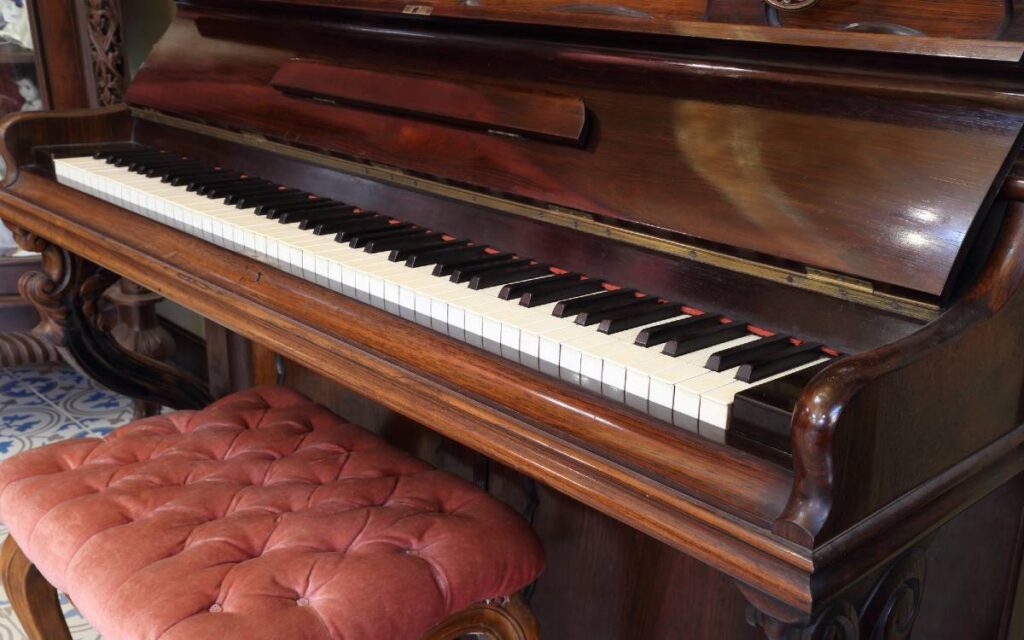
The piano often tends to lure beginning musicians into a false sense of security, since at first it seems easy to play this popular musical instrument. Beginners are usually able to play simple tunes in a few minutes, but it will take many hours to be a master..
This is because you only need to press a key, and the note that’s played will sound perfect. The real challenge in playing the piano usually comes when you start moving to a more advanced level.
When you play the piano, it means you need to play simultaneously with both hands at ranging tempos, and in two different clefs. The right-hand plays in the treble clef similar to a violin, and the left-hand plays in the bass clef similar to a cello. Not only that, but you also have to use your feet to operate the sustain pedal or other piano pedals too.
On top of that, add the fact that if you’re sight reading music, you have to read music that’s written in two clefs at once. You also have to worry about turning the pages at the right time. Adding up all of that can make piano playing very hectic, especially if you’re playing a song with a fast tempo.
There are two types of pianos that beginners can start with, the digital piano or an acoustic piano. If you’re on a budget, we recommend starting with a digital piano and then moving on to the acoustic one as you start developing your skills.
One good thing about learning the piano is that there are many different learning materials to get you started. Finding a good piano tutor is also easier than finding a tutor for an accordion, so it should be fairly simple for you to get started.
8. Guitar
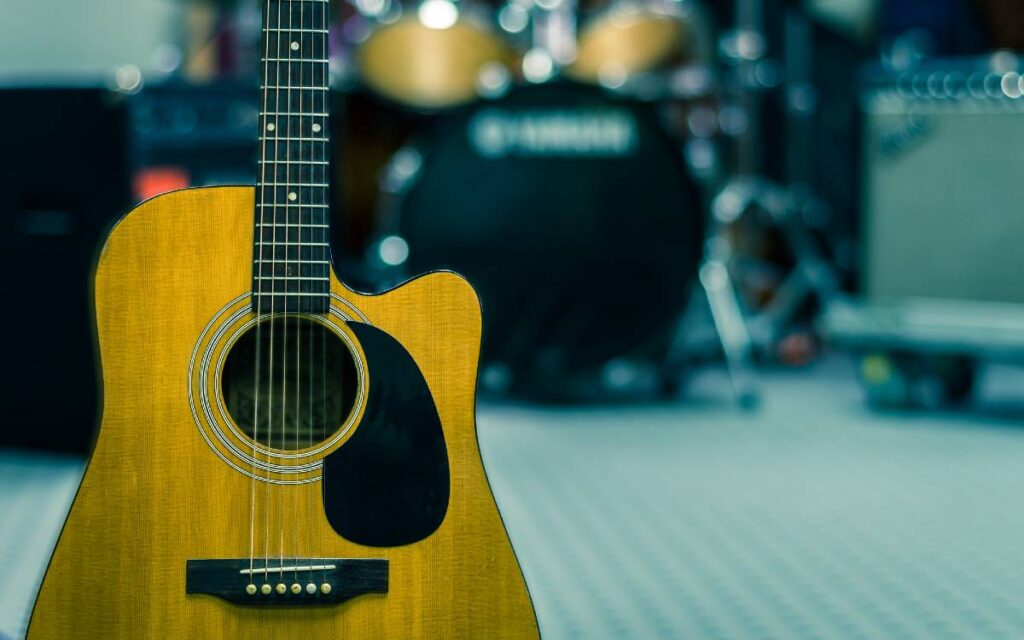
The guitar isn’t up there with the most difficult instruments to learn, but that doesn’t mean it’s easy. Think of the people you know. How many started with guitar lessons and gave up after a while with nothing to show for the lessons they had?
What puts these string instruments into our list is the gap between a beginner and a master. The guitar is one of those instruments where you can pick up the basics fairly, but learning to become an expert guitar player takes a long time and requires consistent daily practice.
Many aspects of the guitar are not much of a challenge to start with. In fact, you can learn to play a simple melody in the very first lesson, and quickly strum some easy acoustic guitar songs. However, there are a number of hurdles that can show up pretty quickly after the first few guitar lessons.
Beginners face their first hurdle when they start to learn guitar chords instead of individual notes. As well as working on finger placement, you need to play certain notes and chords. Some people struggle to build up finger strength and speed in order to play certain riffs.
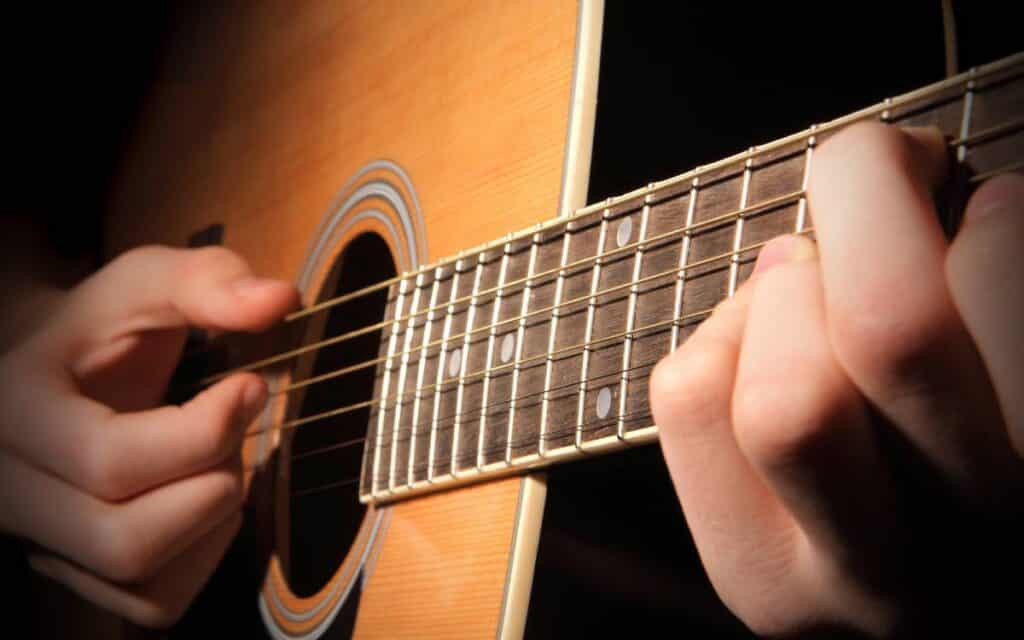
Mostly, it just boils down to the amount of dedication and time you can give in order to hone your guitar-playing skills. It takes a while to build up muscle memory and have your hands work in tandem with your brain.
However, one thing that makes the guitar very accessible is the amount of information and tutorials you can find online, books that can help you learn, and different ways to learn guitar. Also, hiring a guitar tutor is relatively easy because the guitar is a really popular stringed instrument to learn, and as such will help you master any other stringed instrument later, such as bass or ukulele.
9. Oboe
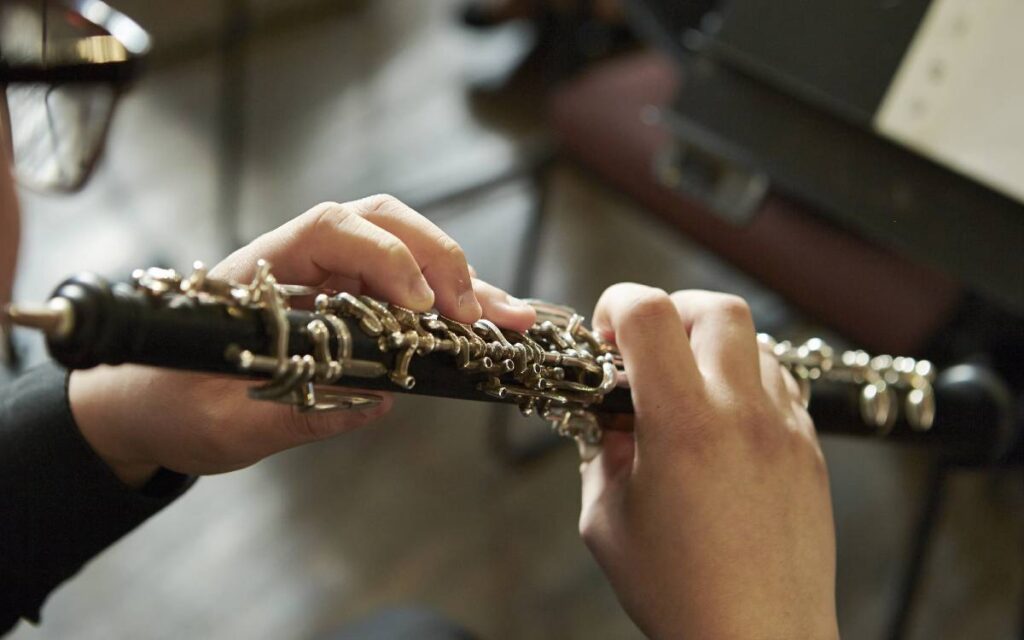
Woodwind instruments are relatively hard at the best of times. The oboe may look simple in its appearance but has a lot more to it. It is known to produce a very sharp and clear sound in the soprano range. It requires very skillful lipping and requires the use of your mouth, lips, tongue, and proper breathing.
Playing it requires you to keep shifting your finger technique in order to vary the notes to avoid sounding monotonous. Your fingering technique is the most complex part of playing the oboe while simultaneously being able to control your breathing.
The oboe requires the players to push air out constantly in order to sustain the notes, which makes it very hard for beginners to play. Players often need to learn how to breathe in through the nose while simultaneously breathing out through the mouth (which is called circular breathing).
Combining this with the proper holding of the instrument, blowing with the right amount of pressure, and pressing the keys properly, and you’re in for a very challenging time, especially if you’re in a marching band as it requires you to march while playing the instrument.
Some people think of the oboe as very similar to a flute; however, this is far from the truth. The double-reeded nature of the oboe makes it a much harder instrument to learn. Once you get over the initial challenge and the basic intricacies, the oboe can become easier to play.
10. Organ
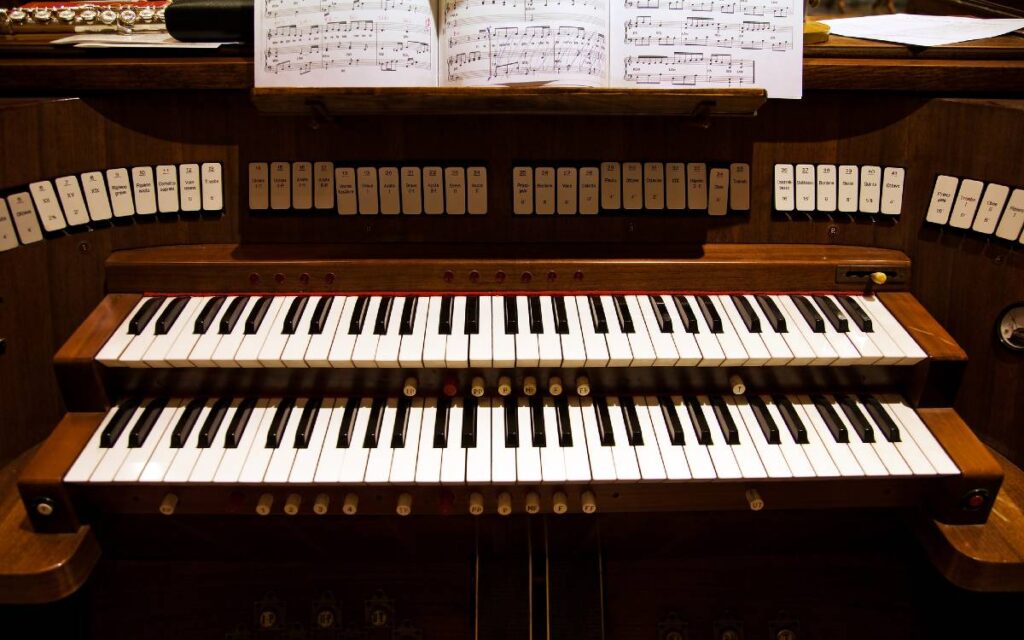
The organ just may be the hardest instrument to play on this list. Before learning the organ, you first have to learn to play a keyboard-based instrument like a piano. However, don’t think that the organ is going to be easier to play once you learn the piano. The organ is still a challenge, even for experienced piano players.
There are two types of organs: pipe organs and electric organs. No matter which organ you choose to play, the fact doesn’t change that organ is a very difficult instrument (although electric organs are much easier).
The organs usually don’t have just one keyboard like the piano. They can have two or even three keyboards consisting of many drawbars and switches, which can be used to modify the tone of the instrument. You don’t need to tweak them constantly, but they do help you get the tone you desire out of the instrument.
They come with low note pedals that provide extra work, meaning you need to have a lot of skill in handling pedals to play the organ. Organs also don’t come with sustain pedals, so you need to hold down the keys as long as you want the note to sound.
The organ can take years to learn, but the process to learn the organ can be significantly easier if you’re a piano player.
FAQ on the Hardest Instrument to Play
Are There Any Other Instruments That Are Difficult?
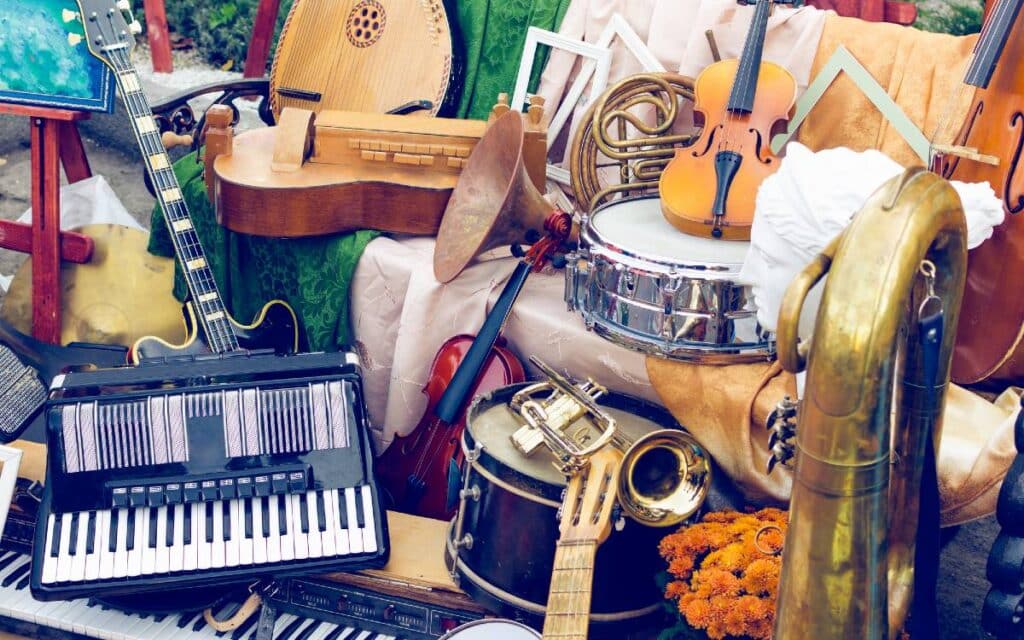
There are a few other musical instruments that could be deemed difficult. For example:
- Saxophone
- Trombone
- Vibraphone
In fact, every instrument can be difficult depending on your definition. Even playing the triangle for a symphony orchestra takes years of practice.
Which Is the Hardest Instrument to Play for Children?
Think big! If it’s hard for children to get their tiny hands into the right spot then it’s harder for them to play. A big brass instrument like a tuba can be quite a challenge for them.
Which Musical Instruments Should I Choose For Something Easier?

We have a whole article dedicated to easy-to-learn instruments. In fact, you’ll find there’s a little cross-over between what we deemed the easiest and the hardest. So perhaps you could pick one of those instruments and get the best of both worlds. It all depends on how “good” you want to be.

